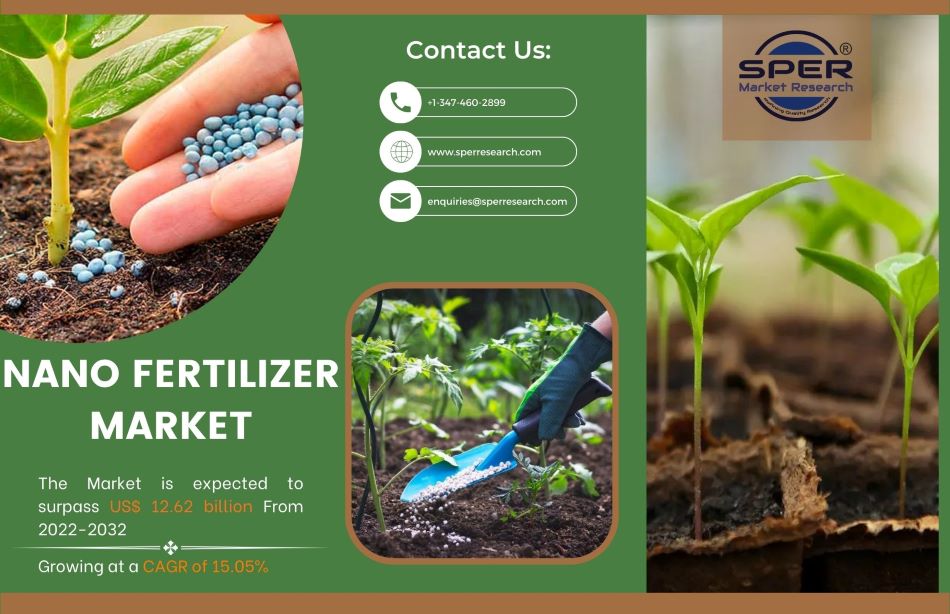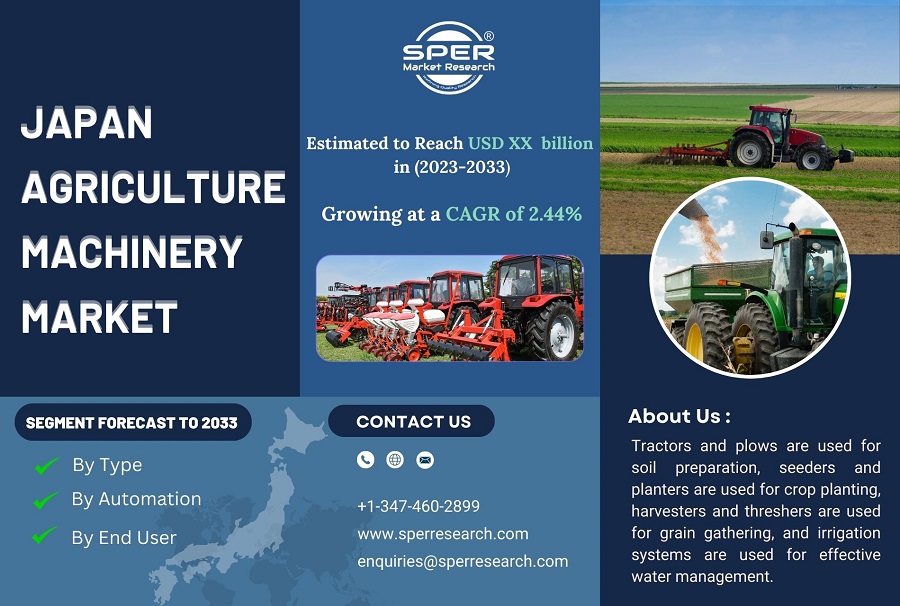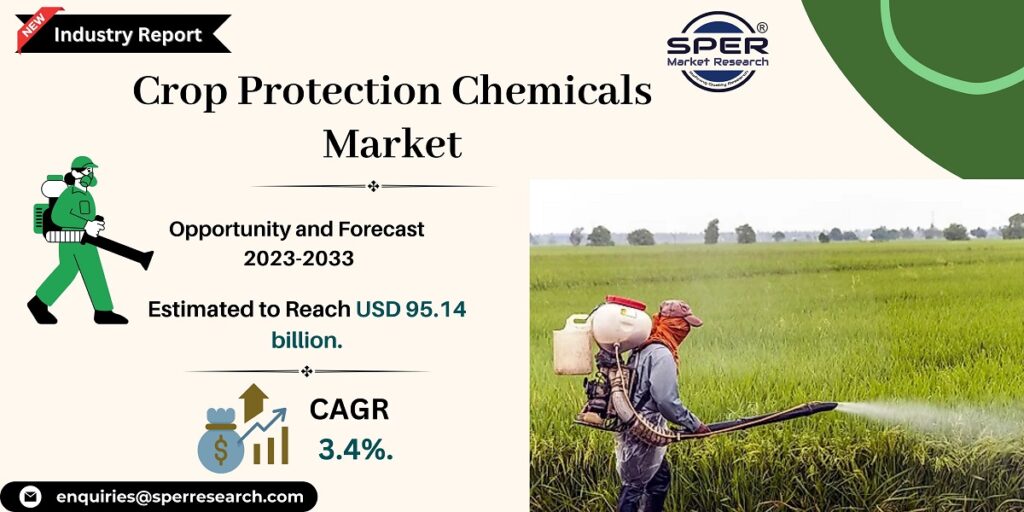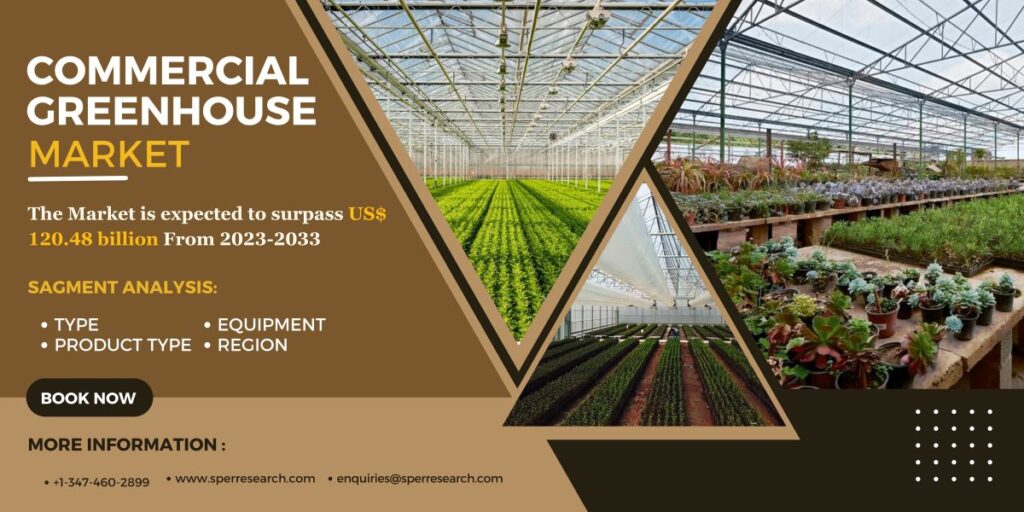Nano-fertilizers involve the amalgamation of nanotechnology and agriculture, primarily aimed at enhancing the effectiveness of fertilizers. Nano-particles are utilized to augment the absorbability of fertilizers by plants, either through soil application or foliar spraying, subsequently being assimilated by the plants. Nano-fertilizers are expected to elevate agricultural yields, enhance plant nutrient absorption, and deliver greater nutrient supply to plants, rendering them popular among customers worldwide.
According to SPER market research, ‘Nano Fertilizer Market Size– By Raw Material, By Method of Application, By Application- Regional Outlook, Competitive Strategies and Segment Forecast to 2032’ state that the Nano Fertilizer Market is predicted to reach USD 12.62 billion by 2032 with a CAGR of 15.05%.
The global nano fertilizers market is experiencing rapid growth driven by the increasing demand for food crops. This growth is primarily propelled by the need to sustain a growing global population. Nano fertilizers offer advantages in nutrient management due to their ability to enhance nutrient utilization efficiency. They release nutrients gradually, reducing fertilizer loss into groundwater while improving nutrient efficiency. Additionally, nano fertilizers can enhance resistance to abiotic stress and offer various benefits when combined with microorganisms, known as nano bio-fertilizers. Unlike traditional fertilizers, nano fertilizers are absorbed in smaller quantities, providing controlled nutrient release and minimizing runoff, leaching, and gas emissions. These advantages are driving a significant shift towards nano fertilizers in response to global efforts to adopt more environmentally friendly practices.
The global nano fertilizer market, while promising, faces several obstacles that could impede its growth in the foreseeable future. Key challenges include the high production costs associated with advanced technology, limited awareness among farmers regarding the advantages of nano fertilizers, a lack of well-defined regulatory frameworks for nano fertilizer usage, uncertainties regarding the environmental effects of these products on soil and water quality, and limited market availability due to the small number of manufacturers and suppliers.
Request For Free Sample Report @ https://www.sperresearch.com/report-store/nano-fertilizer-market.aspx?sample=1
Impact of COVID-19 on Nano Fertilizer Market
Additionally, the global nano fertilizer market experienced notable disruptions caused by the COVID-19 pandemic. Firstly, it led to supply chain interruptions, making it challenging for manufacturers to procure the necessary raw materials for nano fertilizer production. This resulted in production delays and increased costs. Secondly, the agriculture sector faced financial constraints due to the pandemic’s impact, causing reduced demand for nano fertilizers as farmers sought more cost-effective alternatives or decreased fertilizer usage. The long-term effects of the pandemic on the global nano fertilizer market remain uncertain as the situation continues to evolve.
Nano Fertilizer Market Key Players:
Geographically, due to advancements in agriculture, North America is poised to lead the global nano fertilizers market in the next five years. Research and technological progress further support the market’s growth worldwide. Meanwhile, countries like India and China, reliant on agriculture, are expected to experience rapid expansion in the Asia Pacific region. The adoption of nanotechnology in agriculture will drive global nano fertilizers market growth. New entrants can collaborate with established industry leaders to introduce innovative products and build brand value. Additionally, some of the market key players are BASF SE, CF Industries Holdings Inc., China National Petroleum Corporation, OCI Nitrogen, Petrobras, Qatar Fertiliser Company, SABIC, Yara International ASA, Others.
Nano Fertilizer Market Segmentation:
The SPER Market Research report seeks to give market dynamics, demand, and supply forecasts for the years up to 2033. This report contains statistics on product type segment growth estimates and forecasts.
By Raw Material: Based on the Raw Material, Global Nano Fertilizer Market is segmented as; Carbon, Nitrogen, Silver, Zinc, Others.
By Method of Application: Based on the Method of Application, Global Nano Fertilizer Market is segmented as; Spray and Foliar, Foil.
By Application: Based on the Application, Global Nano Fertilizer Market is segmented as; Cereals and Grains, Fruits and Vegetables, Oils and Pulses, Others.
By Region: The Global Nano Fertilizer Market report covers Australia, Brazil, China, France, Germany, India, Indonesia, Japan, Russia, South Korea, the United Kingdom, and the United States. In previous year, North America had a revenue share dominating the market.
This is explained by the rise in demand for high-yield crops in the United States, Canada, and Mexico, with the United States accounting for billion in agricultural exports in previous year.
For More Information, refer to below link:-
Nano Fertilizer Market Future Outlook
Related Reports:
Follow Us –
LinkedIn | Instagram | Facebook | Twitter
Contact Us:
Sara Lopes, Business Consultant – U.S.A.
SPER Market Research
+1-347-460-2899









